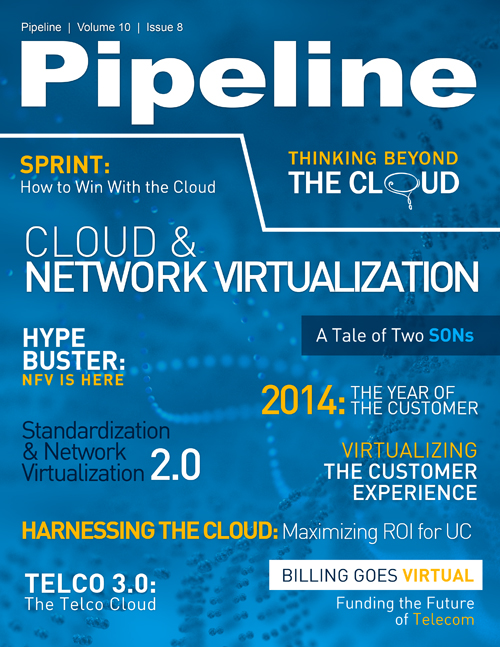The Power of Team Collaboration in the Sale and Design of Cloud Infrastructure for Enterprises
By: Dan Baker, Joseph Martin

Dan Baker, Analyst at Technology Research Institute interviews Joe Martin, Director Solution Engineering at Sprint.
Solution provider sales to enterprises were simpler before the cloud arrived. Industry players focused on their niches; for example, EDS might provide systems integration, IBM the computing, and AT&T the connectivity.
Today, however, a multitude of players compete for the complete cloud infrastructure sale. Business opportunities become large as IT and communications roles and equipment converge, resulting in cheaper-to-run, more capable, and more flexible clouds.
Communications service providers, with their long experience in delivering reliable and diverse communications, can win big since reliability is one of the toughest technical obstacles for customer acceptance of clouds.
Service providers are definitely in a sweet spot, yet there’s a caveat: the cloud is highly complex and many more competitors are vying for the business than in the days of simpler connectivity. Competition makes it critical to have an organized, scalable back office — one where salespeople and design engineers can collaborate effectively and produce network designs that flow through provisioning without errors. Several barriers make it challenging to achieve that goal, for instance:
-
Non-technical salespeople need to consult with and communicate reference designs to prospects before precious expert engineer resources get engaged.
-
So many sales and engineering people must collaborate to create proposals and design iterations; so much so that maintaining accuracy becomes difficult when designs are managed with spreadsheets.
-
Design engineer experts are often overloaded and don’t have tools to easily delegate work to lower-level engineers.
Since 2008, Sprint has been centralizing its enterprise cloud sales and design processes around a collaborative solution design platform that enables Sprint to cost-effectively and accurately create complex network proposals and designs.
We had the opportunity to interview Joe Martin, director, Solution Engineering at Sprint about their collaborative solution design approach and the challenges of being an enterprise cloud solution provider.
Dan: Joe, Sprint has won a number of industry awards for its ability to serve and delight enterprise customers. What do you attribute that success to? And how are you able to so consistently meet an enterprise’s requirements and expectations?
Joe: Dan, there are three things that give Sprint an advantage in dealing with enterprise clients: 1) our customer service portal, called Compass; 2) the Sprint people who deal directly with the customer; and 3) our back office efficiency.
First, customers really like our Compass portal because they can view their network’s performance and dialog with us about the services we provide them. We make sure that the Compass interface provides a consistent look-and-feel across the entire customer lifecycle. For instance, what the customer expects coming out of the pre-sale stage is exactly the same in the post-sale stage. So the on-going conversation is based on a consistent foundation and the enterprise customer always knows what to expect from Sprint. Second, in our customer feedback surveys, we constantly hear that our front-line people are informative and highly consultative with the customer — and are skilled in explaining complex technology to create true enterprise-grade solutions.
And third, we credit a lot of our success to back office efficiency. Our increased productivity comes from using collaborative design tools, including Netformx DesignXpert, that enable multiple team members, as well as our customers, to participate in the entire requirements gathering, solution generation, and design process. By using the tool’s configuration rules and vendor knowledge base, the final orders are accurate and flow through provisioning without error. The end result is a predictable outcome which is very important for enterprise customers who don’t want any surprises and, especially, want their services delivered on time and on budget. Yet, this is not easy to achieve because design configurations are constantly changing as customer requirements and technology evolve.
Dan: Iterating with the customer as requirements and the network itself change during the sales process must make it very difficult to accurately design complex cloud or data center networks, especially when teams of people are actively involved. It seems like it could create a chaotic environment that is ripe for errors and inefficient use of resources. I also wonder whether collaboration and the tool remove the fun part of an engineer’s job. How have you managed the personnel aspect of this complexity?
Joe: I suppose solution engineers might imagine themselves as Michelangelo designing the ceiling of the Sistine Chapel. But the truth is that the cloud environment is extraordinarily complex. Nobody can design solutions alone because the knowledge required is so varied and dozens of deployment issues need to be synchronized. So, we place enormous importance on enabling our engineers to collaborate with one another.



















